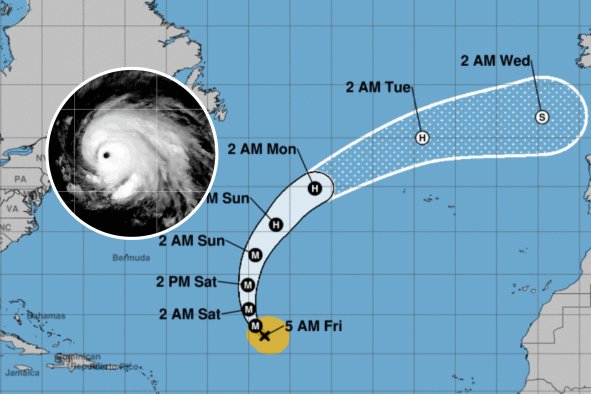A strong geomagnetic storm is heading for Earth, bringing with it the opportunity for stargazers across several U.S. states to catch a glimpse of a mesmerizing Northern Lights display.
The National Oceanic and Atmospheric Administration's (NOAA) Space Weather Prediction Center issued a G3 geomagnetic storm watch last night after two strong flares erupted from the sun in the space of 48 hours earlier this week.
The Northern Lights may become visible over many of the northern states and some of the lower Midwest to Oregon, the NOAA said in its update.
"The sun is far from boring, and at times it has these large explosions that we call solar storms," Peter Gallagher, head of astronomy and astrophysics and director of the Dunsink Observatory at the Dublin Institute for Advanced Studies, told Newsweek.
"These explosions carry hot gas and magnetic fields away from the sun, and many of them just go out into the solar system and never hit Earth. But when these balls of hot gas and magnetic field come toward here, they can cause auroras."
Gallagher explained that this week's explosions came right from the center of the sun, which is facing straight at us. "It's kind of like looking down the barrel of a gun," he said.
When the material from the sun arrives, it interacts with Earth's magnetic field, funneling the charged particles into our atmosphere. When these particles collide with gases in Earth's atmosphere, such as oxygen and nitrogen, they excite the atoms, releasing energy in the form of colorful light displays.
The ejections from the sun are traveling at around 2 million miles per hour, but as the Earth is 93 million miles from the sun, they take a day or so to arrive.
"By Saturday or Sunday, these solar storms are going to impact Earth, and when they do, there's going to be aurora," Gallagher said, though he advised that it could be worthwhile going out tonight just in case.
To get the best view of the northern lights, Gallagher suggested finding a location free of clouds and far from urban areas. "Dark skies away from city lights and no cloud, and you should see the auroras," he said.
Though the light display is pretty spectacular, the solar storm may cause some interruptions to technological infrastructure.
"Users of HF radio may experience loss of contact or major disruptions for a number of minutes to a couple of hours in the affected areas," the NOAA said. Other effects on infrastructure are possible, but most can be dealt with.
The Sun is currently at its solar maximum, the peak of its 11-year cycle of activity. This increases the likelihood of aurora-causing events, meaning more frequent displays of the Northern Lights in the coming months.
Do you have a tip on a science story that Newsweek should be covering? Do you have a question about the Northern Lights? Let us know via science@newsweek.com.
Disclaimer: The copyright of this article belongs to the original author. Reposting this article is solely for the purpose of information dissemination and does not constitute any investment advice. If there is any infringement, please contact us immediately. We will make corrections or deletions as necessary. Thank you.



